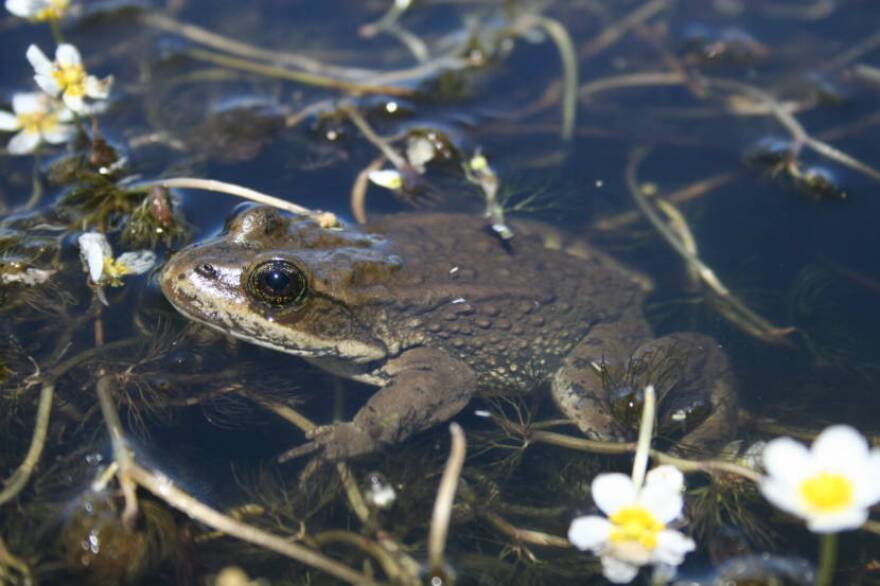An invasive fungus is threatening Alaska’s frogs, toads, newts and salamanders.
The fungus’ full Latin name — Batrachochytrium dendrobatidis —is such a mouthful that scientists refer to it as “Bd” or chytrid.
Reese Brand Phillips leads the threatened and endangered species program for the National Forest Service in Alaska. He says it’s a threat to all six of Alaska’s amphibian species. And he’s calling for a multi-agency working group to get ahead of the fungus before it’s too late.
“We know that it has had devastating impacts elsewhere," Phillips said. "So we want to get a handle on this before we see impacts in Alaska."
It’s not always lethal — but the fungus has decimated frog populations around the world. It's thought to be responsible for up to 90 extinctions. Phillips says researchers aren’t sure how it got to Alaska, but it has been observed here since the year 2000.
Researchers have traced chytrid from the Kenai Peninsula to Prince of Wales Island. It’s not everywhere— there’s no evidence of the fungus on Douglas or Admiralty Islands near Juneau — but it’s turned up in Yakutat, Cordova, Haines and Skagway. And while scientists know the fungus is widespread, they don’t yet have a sense of its impact on frog populations in the state.
That's partly because they don’t know how many amphibians there are.
“There’s some anecdotal evidence that frogs used to be more abundant than they are now, but we can’t definitively say that Bd did that," Phillips said. "And so that’s one of the challenges that we have right now is trying to gather that baseline data to really try to ascertain where we’re at."
Phillips said the fungus thrives in warm temperatures — about 60 to 70 degrees Fahrenheit. That means climate change could increase its prevalence in the state.
“If things warm in Alaska, like we anticipate, what that’s going to probably do is it’s going to expand the areas northward where Bd can survive. And so we can anticipate that we might have Bd in areas where we don’t have it now."
That could be hard on amphibians. Humans don’t get Bd, and predators don’t either. It only affects freshwater zones.
Phillips said fieldwork in Alaska this summer will give the agency a better sense of where the virus is, and point to how it might be contained.

